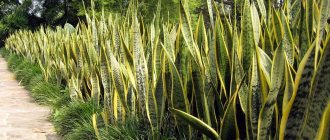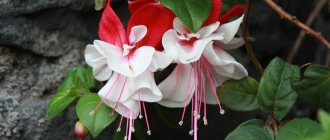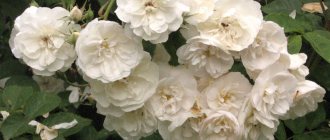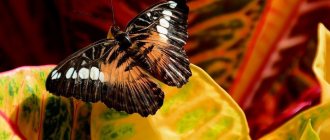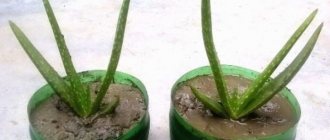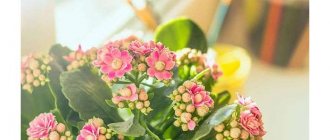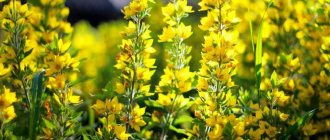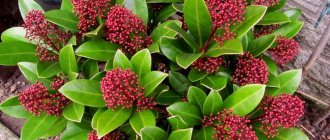What types are there?
Euphorbia is a numerous genus of plants in the Euphorbiaceae family . There are a huge number of species, among which there are both annual and perennial. This genus also includes representatives of different groups:
- succulents;
- herbs;
- shrubs;
- trees.
Moreover, they can be deciduous, leafless, prickly, or have different stems that are different from each other. The only thing that unites representatives of the Euphorbia genus is the presence of white juice, reminiscent of milk.
The sap of any type of milkweed is poisonous, so it is not a suitable plant for apartments with pets and children. You should also be careful when using folk recipes with milkweed: it can only be used externally.
Description of varieties
Indoor spurge has many different species, different from each other . Most often, several of them are grown at home.
Triangular
One of the tallest types of indoor milkweed - it can reach 1 m in height, however, it is most often grown on window sills. A young plant has one trunk, but the older it is, the more branches it has. It has double spines on the tubercles and flattened leaves on thin branches, which is why it looks somewhat strange.
Video about milkweed triangular:
Poinsettia
Also called Euphorbia Beautiful . It is a tall branched bush with many thin stems. The leaves are large (up to 16 cm), oval, but pointed at the ends. Their surface is ribbed, rough, with obvious veins. The bracts are large and red, the flowers are also red and resemble ordinary leaves.
Poinsettia is considered one of the most beautiful species of milkweed.
Video about Euphorbia Poinsettia:
mile
He's a brilliant spurge . It is a highly branching succulent with elliptical leaves and many thick conical needles. It can bloom, the flowers are yellow, orange, white, pink, etc.
Video about milkweed Mil:
Belozhilkovy
It has a single trunk, woody closer to the roots. The leaves are oval, but pointed towards the end, growing on fleshy, succulent branches. Arranged in a spiral. Over time, they die and fall off from the bottom up, with the result that over time the plant resembles a small palm tree, since the foliage remains only at the top. The leaves themselves are dark green with white veins, their reverse side is pale. Doesn't bloom.
Video about Euphorbia Belozhilkov:
Enopla
A highly branching succulent that, under favorable conditions, can grow up to 1 m in height. It has long (about 5 cm) spines, red in a young plant and turning gray in old age.
Description
Garden spurge belongs to a large genus, which includes about two thousand plant species, which, in turn, belong to the Euphorbiaceae family.
The huge species diversity includes both annual and biennial plants, as well as perennial plants. Among the many euphorbias there are highly ornamental and weedy species that gardeners have great difficulty removing from their plots.
For the most part, representatives of the genus are found in African territories, but about 20 species are perfectly adapted to the harsh realities of the Russian climate.
Unfortunately, precisely because of the species diversity, it will not be possible to give a general description of milkweeds , since the plants have strong differences in stem height, leaf shape and bush structure.
But all milkweeds have one thing in common: milky sap.
For people who are allergic to latex, contact with the milky juice is strictly prohibited. The fact is that the juice contains rubber - a natural raw material for the production of latex.
You need to be very careful when working with milkweed: a couple of drops of juice on the skin can cause itching, redness and even ulcers.
If it gets into the eyes, it leads to partial loss of vision and severe burns to the cornea. The juice that reaches the stomach causes severe vomiting , diarrhea, and increased body temperature.
When they bloom, milkweeds produce attractive, brightly colored petals that are mistaken for flowers. But these are not petals, but leaf plates that are designed to attract insects to pollinate the flower itself, which is rather inconspicuous.
Growing conditions
Since there are many varieties of homemade milkweed, care rules may have nuances depending on the specific species . Most representatives of indoor milkweed are succulents or related species, so general recommendations apply specifically to succulent milkweed.
Air temperature and humidity
The optimal temperature for good growth and development is 20-25 degrees (during the dormant period it should be reduced to 14). Even if the room is too warm, drafts should not be allowed. It is better not to place spurge next to windows that are opened for ventilation.
Humidity does not matter for milkweed: it feels equally good at high, medium, and low humidity.
Where does it grow best?
Euphorbia loves light very much and therefore needs long daylight hours and feels good on window sills or other surfaces close to the window.
But if direct sunlight falls on it for a long time, it may get burned, so you should not place it in front of those windows into which the sun shines directly. In these cases, the plant should be shaded.
In winter, it needs artificial lighting even during hibernation . With a lack of light, at best it stops growing, at worst it withers and dies.
In summer, milkweed can be taken out onto the balcony or into the garden, but in this case you need to monitor precipitation and wind: this plant does not tolerate either of these. At the same time, in calm weather it feels good outside.
Growing plants from cuttings
Euphorbia is an unpretentious crop that is easy to care for and does not cause much trouble when growing.
Plants propagate well from root or stem cuttings.
To do this, the prepared material is placed in a peat substrate. The plantings are covered with film to create a greenhouse effect and regularly sprayed with a spray bottle.
For quick rooting, you need to maintain high air humidity and keep the substrate slightly moist all the time.
Due to high humidity, the greenhouse is opened daily for ventilation to prevent mold from growing.
A sign that the cuttings can be planted in individual pots and the shelter removed will be the appearance of new shoots.
Home care
How to water?
Different types of milkweed require different watering regimes . Succulents need little water; a small amount of water is enough for them. You can simply moisten the soil every time it dries out. If you forget to water the spurge succulent, it will not get any worse; only systematic breaks are critical. But the less the plant looks like a succulent, the more water it needs.
Dry soil cannot be left, but moistening it or filling it with reserve depends on the type. Like other houseplants, the frequency and amount of watering should be reduced during the dormant period.
Does not require spraying and is indifferent to air humidity levels.
Trimming
After flowering, you need to cut off the bracts, you can also cut off the tops . At the same time, it is better not to touch the largest and healthiest stems, otherwise they will not bloom next year. Dry shoots and leaves should always be cut or broken off, regardless of the season.
Feeding and fertilizer
It does not require additional feeding; moreover, excess mineral fertilizers can be harmful.
Euphorbia can be fed only in small quantities during the flowering period. You can use complex fertilizers for deciduous plants or for succulents, depending on what type of particular spurge is.
In spring, fertilizers are added once a month, in summer - twice a month , always in a minimum dosage.
How to care during the dormant period?
At the end of summer, you need to stop feeding and gradually begin to reduce the frequency and volume of watering. During the dormant period, the optimal temperature for milkweed is about 14 degrees. There is no need to water it abundantly at this time, just lightly moisten the soil.
As spring approaches, the frequency and volume of watering should be increased to prepare the plant for awakening and growth.
Features of transplantation
Euphorbia needs transplants to expand space for roots and renew the soil; it tolerates them well. The older the plant, the less often it needs to be replanted . You need to put drainage in the new pot and sprinkle it with soil. Remove the spurge from the old pot, shake off the soil from the roots as best as possible, get rid of their damaged areas, place them in a new pot and cover them with soil.
Water and place in the shade until rooting, then return to the usual lighted place. Replanting is carried out annually (for old plants once every 3-4 years) in the spring.
Pot
The best option for a pot is deep and not very wide . Holes at the bottom are desirable for sufficient oxygen supply; in this case, the pot should be kept in a tray.
Soil and drainage
The bottom of the pot needs drainage made of pebbles or expanded clay. Soil is poured onto it from a mixture of equal parts of peat, sand, leaf soil and turf. You can buy ready-made soil for succulents (even if this type of milkweed is not one of them).
Transplanting milkweed
Transplantation is carried out, as usual, in three cases:
- if the plant is sick or there are pests in the soil;
- if the pot is accidentally turned over;
- if the plant has grown and the pot has become too small for it.
Most often, transplants are required due to the rapid development of the plant. In this case, the transplant is carried out as follows:
- The plant is watered to avoid severe damage to the root during transplantation.
- A new soil substrate is prepared based on the proportions indicated above. You can also purchase special soil for cacti at the store.
- The bottom of the pot prepared for transplantation is equipped with a drainage layer, on top of which a certain amount of soil substrate is poured.
- The main lump of soil with the root system is removed from its pot. In this case, excessive breaks of the succulent should be avoided. It is best to carry out the entire procedure together. One will support the plant, the second will plant its root in a new pot.
- The soil that falls off on its own should be chipped away, and then the root plant should be placed in a new pot.
- Add the required amount of soil to the sides and tamp lightly.
The transplanted plant should be lightly watered again (mainly around the edges of the new pot where the new soil is placed). The first fertilizing should be carried out only after 2 months, since there are still plenty of nutrients in the new soil.
What does a flowering plant look like and when does it bloom?
Not all types of milkweed bloom , but in flowering representatives this process occurs almost the same.
The flowers are multi-layered, as if several are nested within one another. If you do not cut off the bracts after flowering, then next year new flowers will appear directly from them, although they will be less developed and inconspicuous.
It blooms annually in late spring or summer ; by early autumn, fruits with seeds are formed, which after ripening must be collected (regardless of whether seeds are needed or not).
Depending on the variety, the flowers come in different colors. Many of the species of milkweed during the flowering period are similar to flowering cacti.
Indoor milkweeds with photos and names
Euphorbia mile
This gorgeous year-round flowering perennial has the form of an abundantly branching bush. Ellipsoidal in shape, soft green leaves are located on the tops of grayish ribbed stems. Each leaf is protected by a pair of stipules transformed into spines. As the flower grows, it loses its leaf blades, but the strong and sharp spines remain for life.
Euphorbia mile
The photo of milkweed mile shows that it blooms in clustered inflorescences, including from two to four flower groups. Each of them is framed with brightly colored bracts. Depending on the subspecies of the variety, they can be: scarlet, orange or yellow. Long green peduncles help the inflorescences break through the thicket of thorns. Look at the photo to see what an indoor milkweed flower looks like in bloom.
Flowering milkweed mile
Basic requirements for growing milkweed
Content Features
The place should be bright and sunny. During the warm season, the plant can be moved to the loggia. In winter, it will need adequate temperature conditions. At low temperatures in the room, spurge should be moved closer to heating devices so that the soil in the pot is always warm. Lack of light and heat, improper watering will cause the leaves of any type of indoor milkweed to turn yellow and fall off.
Choose a bright and sunny place for milkweed
Features of watering
With limited quantities, the procedure must certainly remain regular. For example, in the summer heat the plant should be watered once a week. Euphorbia calmly responds to drought.
Air humidity
It is advisable to maintain this indicator at a moderate level, although in spring and summer it makes sense to increase air humidity.
Fertilizer
The plant is fed only during the period of its active life. Fertilizers for succulents act as nutrient mixtures. Photos and names of types of feeding for euphorbias are available on floristic websites.
Fertilizers for succulents are suitable for milkweed
Transfer
For adults, this procedure is not frequent, performed every two years. Young animals are transplanted annually. The transplant period is spring.
Priming
Humus and leaf plus clay-turf soil are added to the sand base. Good drainage is required.
Reproduction
Milkweed, judging by the photo, reproduces by all known methods. It can be grown from seeds. They are sown in moist soil, pressing slightly, after which a greenhouse is built over the crops. Before emergence, the soil will be covered with glass or hidden under film.
Self-seeding milkweed
You can see the process of growing a milkweed flower from cuttings in the photo. The material is harvested in the first two summer months. The juice should drain from the cut shoot. This will happen faster if you place it in warm water. The cut site is treated with crushed coal, after which the planting material is allowed to dry slightly, leaving it lying on the windowsill or table. After planting, the pot is sent to a warm place for the rooting period.
Propagation of milkweed by cuttings
In addition to milkweed, judging by the photo, African varieties of the plant can also bring pleasure to gardeners. They are attractive because, living at home, they manage to accurately imitate the shape and appearance of their wild relatives. This phenomenon is known as convergence.
Euphorbia large-rooted
What is remarkable about the succulent is clear from the name. However, what many take for the plexus of roots in the photo of an indoor milkweed flower is in fact a bizarrely modified trunk, from which ribbed, segmented branches extend. There are white streaks along their light green background, and the ribbed edges are covered with small tubercles, from which paired spines emerge. There are no leaves as such on the branches. They were replaced by rudiments.
Euphorbia large-rooted
The plant is monumental, therefore it requires a personal “place of residence”. When displayed on a coffee table or a decorative wooden stand, it can act as a bonsai and invite contemplation. Look how majestic the lonely milkweed flower looks in the photo.
The conditions for keeping the plant in the room and caring for it are without nuances, as with all succulents.
"Jellyfish Head"
Another amazing representative of euphorbias, which is very popular among flower growers. It captivates with the unusual appearance of the bush. The shoots of its branches extend downwards, like those of vines, so the plant is often kept in hanging pots or on single stands. Look at this indoor type of milkweed in the photo. The creeping, wriggling appendages are very reminiscent of snakes. Hanging to the sides, they look quite menacing. From a distance, the green composition resembles the head of the mythical Gorgon Medusa.
Euphorbia "Jellyfish Head"
Flowering plant. The inflorescences are numerous, in the yellow-green spectrum, appearing on young shoots.
With its exotic beauty, spurge feels wonderful in any light, but is very afraid of drafts and really needs adequate watering. The latter should be reduced to a minimum in winter. This condition is mandatory for all indoor euphorbias, regardless of type and name.
Blooming Euphorbia "Jellyfish Head"
Euphorbia triangularis
The bushy plant has fleshy stems with clearly defined ribs covered with small spines. Oblong leaves are chosen at the tops of the shoots. Under natural conditions, the plant looks like a tall, one and a half meters, spreading shrub with many clumps. With such growth, this variety of milkweed has a very underdeveloped root system, therefore, you will need to take care of the stability of the bush.
Euphorbia triangularis
The plant is planted in a deep pot with a high drainage layer and is provided with a reliable support. What type of indoor spurge should look like, look at the photo.
Euphorbia white-veined
The columnar, palm-like plant is extremely popular among gardeners. The variety got its name because the young specimens have large oval leaves attached to the green ribbed trunk, as if traced with white veins. This variety of milkweed blooms inconspicuously, but this does not prevent it from remaining the compositional center of the winter garden. Other types of indoor euphorbias, photos and names of which are found in catalogs, will not produce such an effect.
Euphorbia white-veined
Propagated by seeds. The latter germinate quickly and are actively growing.
Euphorbia multiflora
A low, attractive shrub. Grows up to 70 cm tall. The variety is decorative. Flowering period is May-July. Chameleon inflorescences gradually change the shades of flower petals from golden yellow to lemon green.
Euphorbia multiflora
Look at the photo of a milkweed flower. The plant does not lose its attractiveness even after the end of the flowering period. It will retain lemon-colored foliage until late autumn.
Increased frost resistance allows you to use this type of indoor milkweed (see photo) in garden landscaping and decoration of balconies.
Euphorbia multiflora blooming
Reproduction methods
Cuttings
Cut a shoot 10 cm long and remove the lower leaves. Thoroughly rinse off the juice on the cut with running water and treat the area with charcoal. When the cut dries a little, the shoot should be placed in a pot with wet sand.
Cover the top with a film with several air holes (or a transparent cap), leave until the plant takes root, then transplant into a pot with regular soil. It is important that the sand is always moist and that the sprout is not exposed to sunlight.
Seeds
Most species of milkweed are dioecious . This means that for reproduction you will need two copies: male and female. Euphorbia is not a self-pollinating plant, so you will have to carry out artificial pollination yourself during flowering.
- Mature pollinated seeds need to be collected (usually this happens in the fall) and distributed over a mixture of sand and peat (1:1 ratio), like ordinary garden seedlings.
- Moisten the soil, cover with glass and place in a warm place.
- When the sprouts sprout, the glass can be removed.
- As soon as the first sufficiently developed leaves appear, it is time to plant the seedlings in separate pots with the usual soil for adult plants.
Dividing the root
It is rarely used and not for all species (for example, spurge spurge tolerates this method of propagation well, but some species, especially single-stemmed ones, may die).
- At the end of spring or beginning of autumn, you need to remove the plant from the pot, carefully shake off the soil from the roots, cut off rotten and dry areas.
- Separate the stems along with the roots that belong to them (carefully tear them apart with your hands, and do not cut them), treat the breaks with charcoal.
- Then plant all the bushes in different pots with moist soil and place them in a bright but shaded place until they settle in and recover.
- They can then be moved to bright light.
This method of propagation is undesirable, since spurge does not tolerate it well.
During the first year after division, all the bushes involved in the process will grow poorly and bloom little or not bloom at all.
To help in recovery, you need to care for the plant especially carefully, without skipping watering and fertilizing, making sure there is sufficient lighting for a long time every day.
Pests and diseases
Euphorbia is most often affected by pests such as:
- spider mite (in this case, a thin cobweb appears on the leaves, they turn yellow and dry out);
- aphids (leaves are covered with a sticky substance, often accumulating in droplets);
- scale insects (appearance of dense scales);
- mealybug (a white coating that looks like cotton wool covered with cobwebs).
In any of these cases, you should completely treat the plant with a soap solution or a store-bought antiparasitic agent and change the top part of the soil. If possible, after the procedure, you can rinse the flower with a shower, but you should try not to flood the soil. Sometimes the procedure needs to be carried out several times.
Also, sometimes milkweed looks unhealthy, which can happen for various reasons:
- Yellowed leaves may indicate the influence of a draft or stagnant moisture. The problem is solved by reducing watering and eliminating drafts.
- Brown spots indicate sunburn. It is necessary to remove the spurge from direct sunlight and shade it. After eliminating the problem, the stains will disappear on their own over time.
- The stems become thinner with a lack of light. You need to move the pot to a place with better lighting.
What happens after?
In the intervals between flowering, the plant is dormant. The growth of shoots and leaves practically stops until the next growing season.
When growing milkweed, flower growers often encounter some difficulties. Read about why the leaves of a plant turn yellow and fall off and how to help it, and from this article you will learn about how to replant euphorbia and what care it needs after the procedure.
Thus, caring for euphorbia is not at all difficult. A plant provided with basic care will please the eye for a long time.
Characteristics
- Species : depending on the species, it can be a succulent, shrub, bonsai, etc.
- Flower/fruit color : depends on the species (usually blooming white, yellow, pink, red and orange, sometimes other), fruits are different shades of brown.
- Leaf color : different shades of green, sometimes with obvious white veins.
- Sun requirement : high, but does not tolerate direct rays.
- Size : depending on the type - from bushes 10-15 cm to bonsai about 1 m high among indoor species (in the wild there are trees up to 12 m high - like Canary spurge). Creeping species do not exceed 5 cm in height and grow widely to the sides.
- Flowering : some species do not bloom at all, while those that bloom have voluminous flowers, the inflorescences of which seem to be inserted into each other.
- Aroma : none.
Euphorbia is unpretentious, so it is suitable for beginner gardeners. Its poisonous juice poses a danger, so you need to be careful and always wash your hands after working with a flower (pruning, replanting, collecting dry and fallen leaves). The variety of species allows you to choose a plant to suit your taste, which will fit perfectly into the interior of the room.
